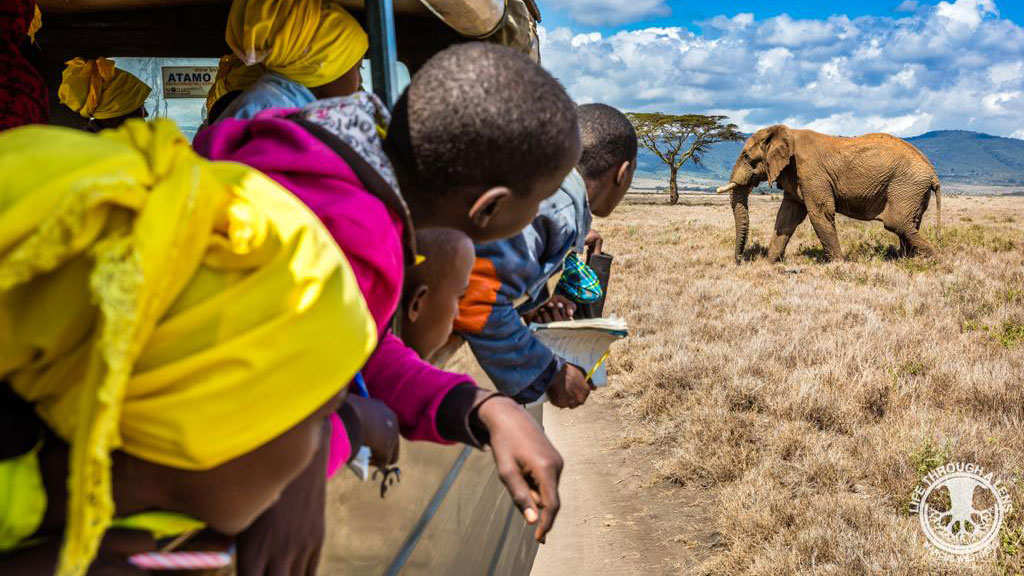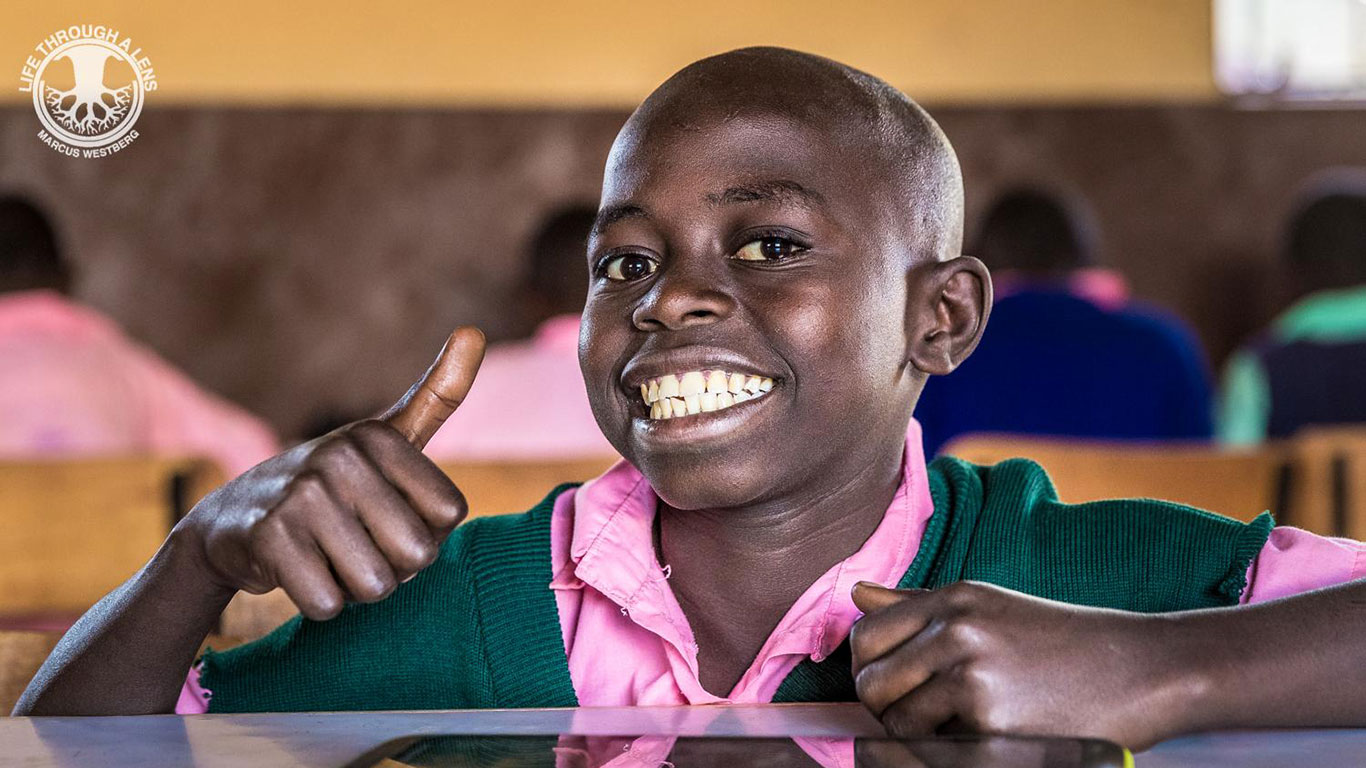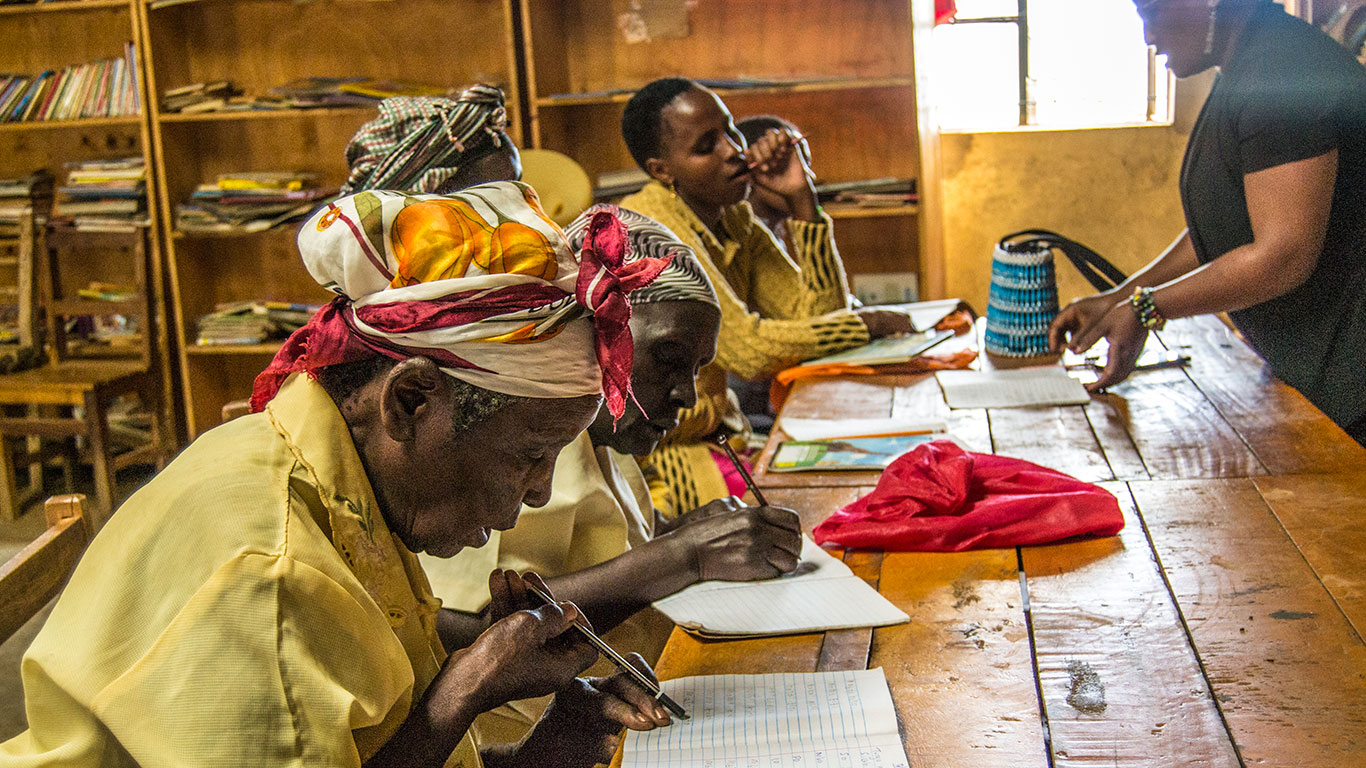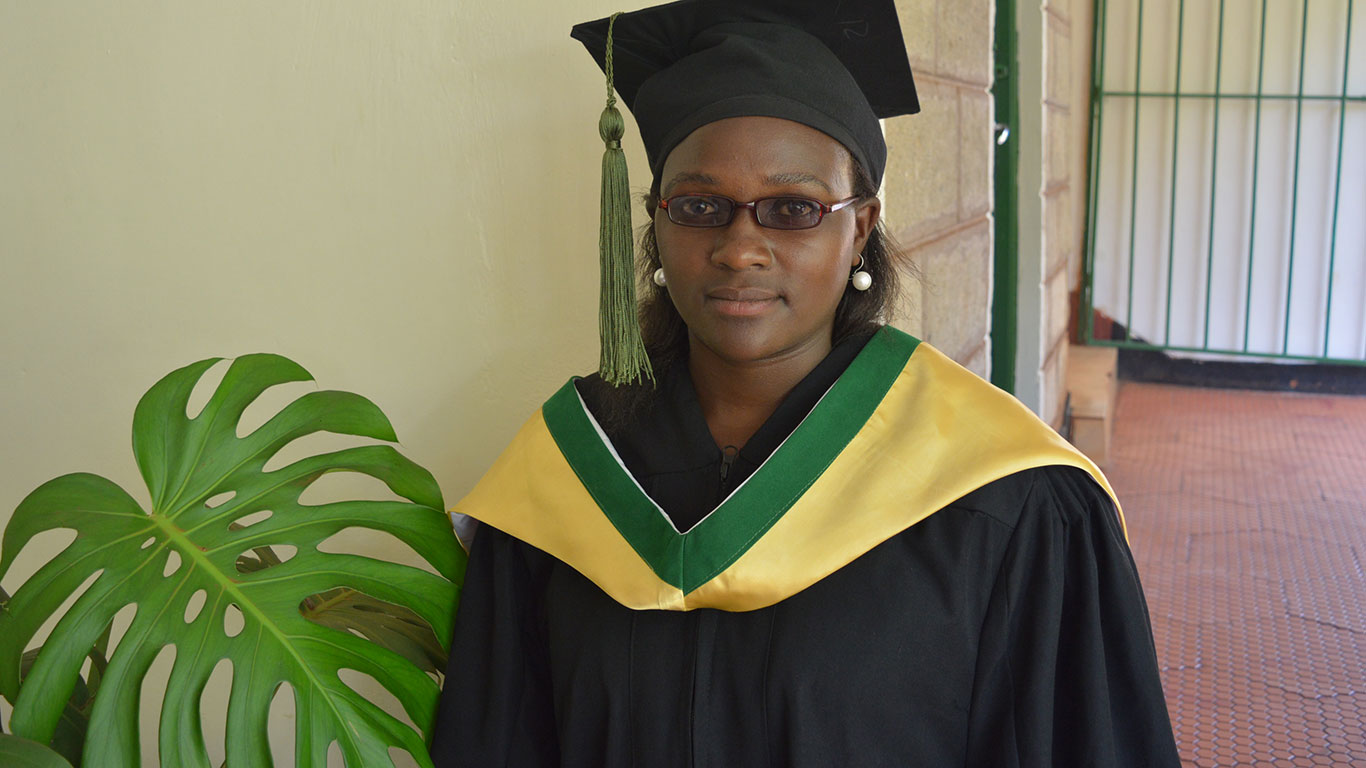Visitors to Lewa are privy to some of the most spectacular wildlife viewing that Kenya has to offer: lion, leopard and jackal thrive on the rich diversity of prey that inhabits the area. The Wildlife Conservancy is home to the largest concentration of Grevy’s zebra in the world, and its range of habitats attracts diverse birdlife and hosts over 200 Black and White rhino.
Featuring large tented bedrooms with verandahs and full en-suite bathrooms, Lewa Safari camp offers authentic comfort for its visitors; cozy log fires in the sitting room are perfect for relaxing after a day in the Conservancy. This unique and exclusive retreat offers privileged access to 65,000 acres of private protected wilderness.
Underpinning the glamorous magnetism of Lewa Wildlife Conservancy is a serious mission: a pioneering and pragmatic approach to conservation, founded in the 1970’s, that has developed into a thriving and globally recognised rhino conservation habitat.
Lewa Safari Camp is the only tourist facility within the Conservancy that is owned by the Conservancy. Profits and conservancy fees generated by the camp are reinvested directly into the conservation and community efforts of Lewa Wildlife Conservancy.
Conservation
The conservancy covers 65,000 acres, a vast wilderness. Lewa has dramatic views to the south of snow capped Mt. Kenya, and to the north down to the arid lands of Tassia and Il Ngwesi. It has many diverse habitats from pristine forest, fertile grasslands, extensive springs and acacia woodland.
Registered as a rhino conservancy in 1983, the conservancy is famous for its successful rhino and Grevy zebra breeding, two endangered species; Lewa is home to 10% of Kenya’s rhino, and 20% of the worlds population of Grevy zebra. The whole conservancy is fenced, and the conservancy employs over 150 rangers. The conservancy does extensive outreach work into the surrounding communities with its Community Development Program, including healthcare, education, micro-finance, and water projects – in order to share with the community the benefits of wildlife.
With over 70 recorded mammal species within the conservancy, for guests, the wildlife experience is unrivalled.
CONSERVATION
Lewa Wildlife Conservancy was previously a cattle ranch owned by David and Delia Craig, who together with Ana Mertz and Peter Jenkins, initially set aside 5,000 acres to protect and breed rhinos, whose population had dropped precipitously from 20,000 to less than 300 in the 1970′s.
AFRICA’S ENDANGERED BLACK RHINOS
One of the most intriguing animals on the planet is the black rhinoceros. This distinctive mammal can reach weights of 1400 kg and prefers a solitary existence. The black rhinoceros is in jeopardy of extinction and would certainly have fared much better had hunters and poachers not pursued them for many years.
Guiding & Activities
Lewa Safari Camp Guides
The Lewa Safari Camp guides are based in camp within Lewa Wildlife Conservancy, and are some of the best guides in the country. Most are from neighbouring communities and have been guiding within the Conservancy for many years, some for over 15 years, they know the botany of the area, palaeontology history of the Lewa, as well as an intimate knowledge of the rhinos, cheetah and lion families. The guides are Bronze or Silver level Kenya Professional Safari Guides Association certified, and they also receive training directly from the Conservancy to the “Lewa Standard”. The walking guides are trained armed rangers from the Conservancy.
Activities
Game Drives
The Lewa Safari Camp guides are based in camp within Lewa Wildlife Conservancy. Most are from the neighbouring communities and have been guiding within the Conservancy for many years, some for over 15 years. All the guides are first class, with Bronze or Silver level Kenya Professional Safari Guides Association certification, and they also receive training directly from the Conservancy to the “Lewa Standard”.
Lewa Safari Camp has open gamedrive vehicles. The current fleet are specially fitted, 4×4 Toyota Landcruisers. The vehicles are unrivalled with feature enhancements specifically designed for comfort and photography – open sided with 3 rows of seats, photographic equipment stands, and charging sockets. Clients will share gamedrives unless “exclusive use of vehicle” has been prebooked at an extra charge.
With the whole of the eastern half of the Conservancy to itself, and with strict limits on tourism numbers with the Conservancy, guests can enjoy an almost private gameviewing experience. Although a vast area, the Conservancy is fenced, (fencing of wildlife areas is very unusual in Kenya), specifically to protect the rhino. The gamedriving is outstanding with plentiful, rhino, elephant, buffalo, the rare Grevy Zebra and resident predators, to a backdrop of beautiful views of snow capped Mt. Kenya.
GUIDED WALKS
Lewa Safari Camp’s walking guides are trained wildlife rangers from the Conservancy. Apart from their knowledge on rhino conservation, they are also knowledgeable about the tracks, botany; and most walks leave from camp.
Take the time to leave the car behind and enjoy the small things – tracks, dung beetles, micro-ecosystems.
NGARE NDARE FOREST
Another walking option is to visit Ngare Ndare forest conservancy. This is a community conservancy to the south of Lewa. There is a canopy walk, and river to play in. There are usually elephants in the forest, so you will be escorted by the Lewa walking guide. This is a full day out from camp with a picnic, and there is an extra cost only to cover the separate conservation fee.
SWIMMING POOL
Enjoy the cool waters in the heat of the day!
Within the lush green gardens, the giraffe design pool has bar service and board games as well as table tennis.
There are sunbeds and a shaded lounge area, perfect for reading and relaxing during the day.
BUSH BREAKFAST AND SUNDOWNERS
Take a moment to sit back, enjoy the spectacular views, the smells, the colours, and the gentle breeze.
Bush breakfasts are a chance to enjoy a full breakfast, al fresco, in the middle of the plains, surrounded by wildlife.
“Sundowners” are a safari tradition – after a day of safari; stop, watch the spectacular sunset; traditionally with a gin and tonic in hand!
MASSAGES
Safari is also a holiday and a rest – a break from today’s frenetic lifestyle.
Lewa Safari Camp offers:
- Massages – a wonderful way to ease the stress out of tired shoulders and backs.
HORSE OR CAMEL RIDING
Lewa Safari Camp offers evening horse rides – you can get very close to plains game as they see you as one of their own! Horse riding is for experienced riders only, as although it is a gentle walk on very well behaved horses, you are in the wild, and need to be able to bring a situation under control when horses are spooked. Horse riding is subject to availability and there is an additional charge. Riders will be requested to fill out a questionnaire to ascertain their competency.
Lewa Safari Camp also offers evening camel rides – less elegant than horseriding, but suitable for those without riding skills, the camels are led by Samburu handlers and it is picturesque experience. Camel riding is subject to availability and there is an additional charge. There are only three riding camels available.
CULTURAL AND CONSERVANCY VISITS
Cultural village visits
Lewa Wildlife Conservancy borders the Samburu community conservancies of Tassia and Il Ngwesi in the arid lowlands of the north, and many of the staff at Lewa Safari Camp come from this area. Lewa Safari Camp offers visits to neighbouring local Samburu homesteads. The Samburu live in semi-permanent huts known as Manyattas and it is the role of the wife to construct the hut from cattle dung and grass. The families will show you round their home for a fee (payable separately, ask reception for details), and will want to take the opportunity to sell their traditional handicrafts – bargain hard!
Conservancy visits
as part of our get involved program, guests who are making donations to the Lewa Education Program, can visit schools during term time. For a small donation, guests can also visit and/or participate in Conservation work, eg training of tracker dogs, have a tour of the Conservancy offices.
WEDDINGS AND HONEYMOONS
Honeymoons
There is nothing more romantic than a safari! Already an unforgettable, once in a lifetime and pampered experience; safaris offer incredible sunsets, romantic tents with spectacular views, and relaxed al fresco dinners. The beautiful setting at Lewa Safari Camp is ideal for that very special romantic holiday.
Being a very special holiday, we often have special offers and upgrades for honeymooners.
Weddings
Over the years, we have hosted many beautiful weddings, blessings, and renewal of vows for our guests.
From small simple ceremonies involving merely a glass of champagne at the end of a gamedrive; to elaborate three day events, with over 30 guests taking over the whole property. Options include legal marriages conducted by the local commissioner or religious minister, or Blessing by the chief of the local tribal community.
Discuss your ideas with your travel agent, or contact us for more information.
Accommodation
TENTS
- 11 ensuite safari tents, all of which can be laid out as doubles or twins. Three of the tents can accommodate triples for children under 16 only.
- Each thatch-covered tent consists of a main bedroom, en-suite bathroom and a spacious verandah. Let us know if you require twin beds or a double bed.
- 2 Family Tent suites – each family suite consists of two ensuite safari tents (one double, one twin) with a shared verandah






FAMILY SUITES
Lewa Safari Camp’s two new Family Tents are the ideal accommodation for families with children. Under a thatched roof, the spacious canvas tents each comprise of an en-suite master bedroom and an en-suite twin room, which are joined together by a private veranda/sitting area with stunning views over the Lewa plains. The en-suite bathrooms have flush toilets and hot water showers. An extra bed for a third child under 16 years can be accommodated in one of the Family Tents to accommodate a family of 5.






Rates & Seasons 2023
| ALL RATES ARE PER ROOM IN U.S. DOLLARS | 1ST JUL – 31ST OCT 20TH DEC – 3RD JAN | 4TH JAN – 31ST MAR 1ST JUN – 30TH JUN 1ST NOV – 19TH DEC | 1ST APRIL – 31ST MAY | |
|---|---|---|---|---|
| ROOM | HIGH SEASON | MID SEASON | GREEN SEASON | |
| Safari Tent Full Board | Double / Twin | 1,086 | 706 | 492 |
| Single | 815 | 530 | 369 | |
| Triple | 1,221 | 795 | 554 | |
| Family Tent | 2,134 | 1,483 | 1,020 | |
| Safari Tent Game Package | Double / Twin | 1,482 | 1,068 | 852 |
| Single | 1,110 | 800 | 640 | |
| Triple | 1,666 | 1,201 | 960 | |
| Family Tent | 2,698 | 1,998 | 1,535 | |
Full Board (FB) Includes:
- Accommodation, all meals (breakfast, lunch and dinner), soft drinks, beer, house wines and selected spirits, teas, coffees and refreshments (on the property), and laundry services. The rates exclude champagne, private cellar wines and premium spirits
Game Package (GP) Includes:
- Full-board package, scheduled and shared game drives, activities including guided walking safari, bush sundowners, transfers to and from our designated airstrips.The game package excludes champagne, private cellar wines and premium spirits.
Vehicle Code of Conduct:
- Only 4×4 vehicles with shades of green or brown in colour are permitted in Lewa Wildlife Conservancy. Saloon vehicles and mini-buses are prohibited, and drivers will be required to sign the Lewa Wildlife Conservancy Code of Conduct.
| APPLICABLE FEES, LEVIES AND/OR TAXES TO BE ADDED | ADULT RATE | CHILD RATE |
|---|---|---|
| (Mandatory and Non-Commissionable, Per Person, Per Night) | ||
| Conservancy Fee | 134 | 67 |
| MAXIMUM ROOM OCCUPANCY | NUMBER OF GUESTS |
|---|---|
| Safari Tent | 3 Guests (2 Adults + 1 Child) |
| Family Tent | 5 Guests (4 Adults + 1 Child) |
| ACTIVITIES, EXCURSIONS AND EXTRAS (PER PERSON, NET RATES) | ADULT RATE | CHILD RATE (<18) |
|---|---|---|
| Shared, Scheduled Game Drives (Included in Game Package Rates) | 105 | 105 |
| Guided Walking Safari, 2 hrs (Included in Game Package, Min 2 Guests) | 84 | 84 |
| Ngare Ndare Forest (When min 4 Guests Included in Game Package) | 70 | 70 |
| Sundowners (Included in Game Package, Min 2 Guests) | 68 | 42 |
| Bush Breakfast (Included in Game Package, Min 2 Guests) | 68 | 42 |
| Exclusive use of a Safari Vehicle with Driver Guide | 440 | |
| Guided Walking Safaris, 4 hrs (Min. 2 Guests) | 105 | 105 |
| Horse Riding within the Conservancy | 100 | 100 |
| Night Game Drive, 2 hrs (Min. 2 guests) | 95 | 95 |
| Camel Riding within the Conservancy | 80 | 80 |
| Visit to Il Ngwesi cultural boma min – 2 pax (children under 10) | 53 | 37 |
| Extra Lunch at Property | 47 | 42 |
| Picnic Lunch Box | 32 | 32 |
| Minimum age for guided walking safari is 16 years | ||
Getting there
Lewa Main Airstrip is a 1hr flight from Wilson Airport, and a 40 minute drive from camp
- Once daily scheduled Air Kenya flight departing Nairobi Wilson
- Once daily scheduled Safarilink flight departing Nairobi Wilson
- Private Charters from anywhere
- >Note – Lewa Conservancy has very strict vehicle rules
and only authorised vehicles are allowed within the Conservancy. Visitors arriving by road have to be collected from the Conservancy headquarters - Road transfer in Elewana vehicle to/from any of Elewana’s other Northern properties or Nanyuki (travel times between 2 and 5 hours)
Lewa Wildlife Conservancy
The Lewa Wildlife Conservancy was founded in 1995. The Conservancy was reinvented from the Ngare Sergoi Rhino Sanctuary, which had been established in 1983 to protect the last of northern Kenya’s critically endangered black rhinos.
Today, Lewa serves as catalyst for conservation in Kenya and beyond. Through the protection and management of endangered species, the initiation and support of community conservation and development programmes, and the education of neighbouring communities in the value of wildlife, Lewa has become a model for wildlife conservation not only private land in Kenya but also a regional centre of conservation excellence.
The area is also a favoured destination for tourism, and a leading example of an integrated approach where both people and wildlife benefit from conservation. For the last three decades, Lewa’s innovative practices have resulted in thriving black rhino habitat and population, which in turn creates a robust ecosystem for a multitude of species including the endangered Grevy’s zebra, elephant, lion, cheetah, giraffe and more.
Lewa’s vision
Lewa envisions a future where people across Kenya continue to value, protect and benefit from wildlife. This future depends on communities being able to derive their day-to-day livelihoods in ways that are compatible with thriving wildlife habitat. As a result, Lewa invests heavily in the livelihoods of its neighbours through programmes in education, healthcare, water, micro-enterprise, youth empowerment and more.
These programmes have enabled the Conservancy to build strong relationships and goodwill within the neighbouring communities, and ensured that people and wildlife both benefit from Lewa’s conservation efforts. As a catalyst and champion of this model that puts people at the centre of conservation, Lewa has influenced and supported the conservancy management for both private and community lands across Meru, Laikipia and Isiolo Counties and further.
Lewa is also a unique entity in the country in that it is a privately managed conservation area, owned and run by Kenyan people, led by a strong Kenyan board, for the benefit of local communities and Kenyans at large.
| Zero poaching of rhinos in the past 6 years. | Home to the third ‘key 1’ rhino population – an increasing and stable population of continental importance – in East Africa. | Spearheaded the formation of other rhino sanctuaries, most recently at Sera Community Conservancy in Samburu. | Over kshs 150M invested in education and livelihood programmes annually. | Stable and increasing wildlife numbers, including endangered species. |

Conservation and Wildlife Management efforts
Together with our western neighbour, Borana Conservancy, we protect endangered and abundant wildlife existing in our landscape, with a focus on the critically endangered black rhino, the endangered Grevy’s zebra and other key species such as the elephant and lion.
The Lewa-Borana Landscape is home to 14% of Kenya’s rhino population and 11% of the world’s population of endangered Grevy’s zebra. We recently hit the 100 black rhino mark, which makes us home to the third ‘Key 1’ (a rhino population that is stable and increasing, and is of continental importance) black rhino population in Kenya.
Over the years, we have played a critical role in rhino conservation in Kenya. We have taken a leading role in the establishment of new rhino sanctuaries, most recently at Sera Community Conservancy in Samburu and translocated more than 30 animals from Lewa to other areas.
We are also a critical landscape to northern Kenya’s elephants, and work with our neighbours to ensure landscape connectivity for all migratory species. Together with partners, we established an elephant underpass connecting Mount Kenya to the savannah landscapes of Lewa and further north, which had been previously isolated by human development. This innovative highway solution has reduced human-wildlife conflict and ensured that elephants can once again move freely along their traditional migration routes.
Support to Community Development & Livelihoods to Improve Conservation Outcomes
Over the years, Lewa has created programmes that directly benefit the surrounding communities, building relationships and goodwill for Lewa’s conservation efforts.
These benefits have expanded to include education, health care, microfinance, improved security and agriculture support, and as a result Lewa benefits from high levels of trust and engagement with its neighbours.
In 2018 alone, Lewa spent close to Kshs 200M in community development, using funds raised from philanthropists and conservation fees.
| Education: We support 23 primary and secondary government schools with close to 10,000 children by building classrooms, dormitories, laboratories, boreholes, teachers’ houses, kitchens and libraries across three counties. | Bursaries: Annually, we provide education bursaries more than 400 students. | Healthcare: Lewa’s four clinics provide affordable and accessible healthcare services to more than 50,000 annually. | Micro-enterprise: Our women’s micro-enterprise programme provides low interest loans to more than 1,800 women to enable them to run their businesses and improve their families’ livelihoods. |
| Water: Lewa’s 17 water programmes ensure that 20,000 people have access to clean and safe water for both domestic use and farming. | Forestry Conservation: Through the community development programme, Lewa champions Community Forest Associations by providing technical, financial and managerial expertise. These include Ngare Ndare, Marania and Muchiene Forests. | Employment: Across Lewa and the lodges, approximately 450 people are employed in various capacities, with over 90% coming from the neighbouring communities. | Conservation education: More than 5,000 children visit Lewa annually for a conservation education experience, which empowers them with knowledge to become stewards of their natural world. |
 |  |
 |  |
Innovation & Best Practice:
Lewa is known by conservation practitioners for its innovation, expertise and leadership, which is enhancing community-based conservation practices and thinking in Kenya and beyond.
CONSERVATION PARTNERSHIP MODELS
Private – public partnership:Lewa works closely with the local and national government agencies to protect wildlife and steer development. An example of this partnership is with Ngare Ndare Forest, a government forest, which partnered with Lewa to manage both landscapes jointly for the benefit of wildlife.Private – community partnership:In the implementation of its programmes, Lewa works very closely with its neighbours to implement development programmes through Development Committees.Sustainable Tourism model:The tourism sector has the greatest potential to financially support conservation. Lewa currently earns a third of its annual revenue from tourism. Lewa’s model ensures that tourism is optimised and has minimal negative impacts on the environment.
Conservation
The conservancy covers 65,000 acres, a vast wilderness. Lewa has dramatic views to the south of snow capped Mt. Kenya, and to the north down to the arid lands of Tassia and Il Ngwesi. It has many diverse habitats from pristine forest, fertile grasslands, extensive springs and acacia woodland.
Registered as a rhino conservancy in 1983, the conservancy is famous for its successful rhino and Grevy zebra breeding, two endangered species; Lewa is home to 10% of Kenya’s rhino, and 20% of the worlds population of Grevy zebra. The whole conservancy is fenced, and the conservancy employs over 150 rangers. The conservancy does extensive outreach work into the surrounding communities with its Community Development Program, including healthcare, education, micro-finance, and water projects – in order to share with the community the benefits of wildlife.
With over 70 recorded mammal species within the conservancy, for guests, the wildlife experience is unrivalled.
CONSERVATION
Lewa Wildlife Conservancy was previously a cattle ranch owned by David and Delia Craig, who together with Ana Mertz and Peter Jenkins, initially set aside 5,000 acres to protect and breed rhinos, whose population had dropped precipitously from 20,000 to less than 300 in the 1970′s.
AFRICA’S ENDANGERED BLACK RHINOS
One of the most intriguing animals on the planet is the black rhinoceros. This distinctive mammal can reach weights of 1400 kg and prefers a solitary existence. The black rhinoceros is in jeopardy of extinction and would certainly have fared much better had hunters and poachers not pursued them for many years.











